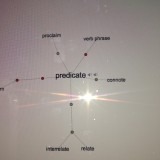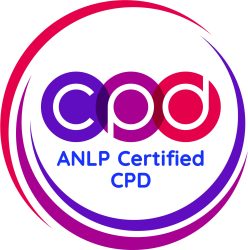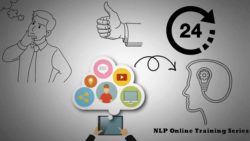 This blog about predicates in NLP has been taken from a live training. Included is a video on predicates featuring Adam Sprackling and Terry Elston.
This blog about predicates in NLP has been taken from a live training. Included is a video on predicates featuring Adam Sprackling and Terry Elston.
Predicates appear like ‘normal’ words, yet are the very illustration of the inner world that we can make sense of via these ‘living’ descriptions. They are sometimes called The VAKOG (visual, auditory, Kinaesthetic, olfactory, gustatory), yet it also includes self talk as well.
Below, Terry and Adam play with words showing how a person can completely mismatch another if they don’t have enough sensory awareness to discover how another makes sense of their own inner world.
“We’re going to have a little fun here, we’re going to show you a skit that
we did on Predicates.
If you remember, Predicates are the words that we
use, the words that we use to describe our inner world to the outside
world. They come in forms of Visual, Auditory, Kinaesthetic, Olfactory,
Gustatory, Self-talk, and we’re going to show you how to mismatch using
predicates in this skit, and then how to match using predicates in this
skit, and also how to cross over representational systems, that’s going
from one preferred representational system through to anothe
representational system and how to guide a client through those.
So please, enjoy.
A: I need a client, though. Yeah. Very busy, but I do know you… clients
are good.
B: Doctor! Doctor, is it Doctor…?
A: Doctor Mess.
B: Have you got time to see me?
A: Yes, yes. I think I’ve got time to see you, yes.
B: I’ve got this problem with, with…
A: Why don’t you come in and have a nice comfortable seat, there we are.
B: Thank you very much, thank you… Whoah!
I’ve got this problem, with my wife, and we don’t see eye to eye.
A: Yes. Oh, I see. Really.
B: I do everything for her, I cook, and I get the stove nice and sparkling
clean afterwards…
A: Yes…
B: and I’ve decorated the house in nice bright colours…
A: Oh. Yes.
B: and we, we just don’t see things the same way.
A: Well, how do you feel about that?
B: Well, well the way I see it is that I’m doing everything and that she’s
just not seeing it the same way as me, so what can I do?
A: Well… aahhh… have you got in touch with how you feel about the whole
situation?
B: I’ve had a look at the situation and I just can’t see that there’s
anything else I’m doing, I’m doing everything, I…
A: Well, just calm down a little, calm down a little bit there. Get in
touch with what it feels like, and umm…
B: I don’t know what you mean, I’ve done that, and I just can’t see the
wood for the trees… I just can’t see it.
A: Well, I’ve got a prescription here for you for some Valium. So there we
go, I think that’s what will do you a lot of good, get you to calm down,
have a really relaxing cup of tea, and get in touch with what it feels like
to, it’s ah I’m not sure, it feels.. the texture’s nice, and, so there we
are… and I will see you in a little while. That’s it, good, run along.
Good, very good.
B: Thank you very much, thank you.
And, two weeks later…
B: Doctor, have you got time to see me?
C: Yes, yes please, please come and have a sit down. Thank you.
B: Well, I went to see this Doctor Mess who just didn’t see things the way
I see it.
C: Oh really?
B: He gave me this tablet it was the wrong colour anyway,
C: I see…
B: and I take the tablets but I don’t see how they work.
C: Right, right, oh I see…
B: anyway, I’ve got this problem. The last doctor didn’t get it, didn’t see
the way it’s actually happening…
C: Oh I see. I think I get a picture of what you’re talking about here.
Yeah, I think we could see eye to eye about this. So you’re saying you’ve
got a problem with your wife. What’s the problem?
B: I’m doing everything, I’m taking, I’m cleaning all the stove nice and
bright, I’m washing the car and painting the house in nice bright colours
and even giving her flowers, beautiful flowers, look all the different
colours, these are things women want isn’t it?
C: Well I can see that, that’s how the way you see it, and I know you’ve
got a crystal clear image of how to make a relationship wonderful, but if
you were to listen, perhaps, to coming down and listening to maybe another
world… What does she like? What does she do in her life? As you begin to
think about this, what does she do in her life?
B: Well she goes walking dogs and she loves having dogs and cats in her lap…
C: Lots of dogs and cats and animals?
B: Yes.
C: So as you’re looking at these pictures of her and then perhaps just
getting a sense of what else does she love, what do you see there?
B: Well I guess it’s that physical contact…
C: Oh, so she’s in physical contact. Right. Okay. So there’s an element of
touch that she really might like in her life. Now I see, I see that you’ve
been doing all these things. No you’ve never looked at it that way, but if
you were to look at it in that way through the senses, through the feelings
as you’re coming down to that place, to have a little look, yep? Almost
like opening another cupboard up, and going inside…
B: Yeah, it’s quite nice when you’ve got a cat you can stroke…
C: Yeah, but she, and she would really like that. I know you do what you do
with ah, in that world, but perhaps a nice little hug.
Yeah, a hug. Yeah, maybe even a lovely massage. You know those lovely oils
you can get with beautiful colours? Beautiful colours and they’ve got great
smells. Dim lights, and then you put the oil on her and it looks beautiful
on the skin. Doesn’t it look gorgeous on the skin?
B: As you say you can get different, what are they called, aromas?
C: Yep, and then you can begin just to use your hands, just beautifully
lovely sensual touch. Let’s see about that.
B: Yeah, we’ll see how that goes.
C: Sure. Okay great, good. Can I have those Valium? Thanks, very much.
Okay. Thank you. Good. Thank you very much. Good. [applause]
Yeah. So. Course that was really obvious what we were doing there, but this
is what happens in everyday life. You know, people just mismatch each other
all over the place.
So, we’re looking at, we’re going back into, delving back into our NLP here
and noticing this from our strategies section from eye patterns and also
noticing also in business for instance… who of you are already in
business?
Yeah, like you’re in the business world, as opposed to the education world
or the therapy world. Okay? So it’s about half of you here.
What do you think is the favoured rep system in the business world?
“A/D”.
Yeah. So there we are. So if you go in, let’s say fifty percent of people
in business they’re going to be using their A/D modality for speaking. So
if you’re speaking in any other tongues, then you’re going to be
mismatching straight away.
So, that’s what we’re saying. Fifty percent of people in business are using
an A/D criteria. And what would be the reason for that, why do you think
that’s so high in business? Why is that so high in business?
“Process?”
Process. And?
“Organisation.”
Organisation. Yeah. Two great A/D words by the way. Process and Organisation.
Yeah, you’re right you’re going along with this, it’s fantastic.
Understanding criteria that we’re going into.
So why else?
“Logic”
Yeah, for logic. Why else? Why else do you think in business?
“Is it, could it be that it doesn’t have the same appeal to the other
senses, it appeals to as many people as possible, it’s general.”
Well it is a labelling. It’s a labelling criteria, because there’s no
feelings in A/D. It’s a label. And that might be a clue, as well, as to why
it’s being used so often in business.
[indistinguishable]
Right, exactly. It’s distance. So you can do a whole bunch of things, I
mean you can work 23 hours a day, you can, you know business people tend
to, can work and work and work and work and work. They can sack people for
nothing. You know, Right, you’re out of a job, blah blah blah blah. Because
there’s nothing to do with the feelings. See? So you can distance yourself.
You can use labels.
Particularly useful in the police force as well, if you think about it. If
you’re in the police: “I was walking down Bow Street recently and I heard
the car accident, and I saw several limbs flying through the air, and as I
watched these limbs flying through the air one landed very close to one of
my feet, my right foot actually. So, as I bent down I noticed there was red
blood coming from one of the severed arteries in blah blah blah blah and
the aforementioned blah di blah di blah.”
And everyone else is going “aaahh aahhhhhhh”.
So A/D is a good facility to have if you want to be dissociated from
certain things.
“It’s quite direct as well, in business meetings the terminology’s quite
direct, and tonality’s quite…”
It’s process-orientated, and it’s fact orientated and it’s about
understanding, process, structure, criteria. So you could say if it was a
feeling it’s kind of cold, in some ways or other, but it’s about
understanding, criteria, process, structure… in that genre. And it’s a
labelling system, so it can label all the others. It can label Visual, it
can label Auditory, it can label Kinaesthetic.
So then we’re saying that you can mix all of these around obviously. And
this is about creating rapport. It’s also about knowing about yourself.
So, what have you learnt about yourself, in terms of these particular criteria?
What have you learnt so far about yourself?
Well, we trust you found that amusing, and seen how powerful it is to be
matching predicates in your client’s system. So what we’d like you to do is
to do the test which is on page 25 and 26 in your NLP manuals and find out
for yourself your preferred system, remembering it’s always in context, so
they do change, but this will just give you a rough idea of where you come
out strongest.
See the next blog to find out what your score is on your own preferred representational system is by the predicates you use(i.e visual, auditory, tactile, self talk).




